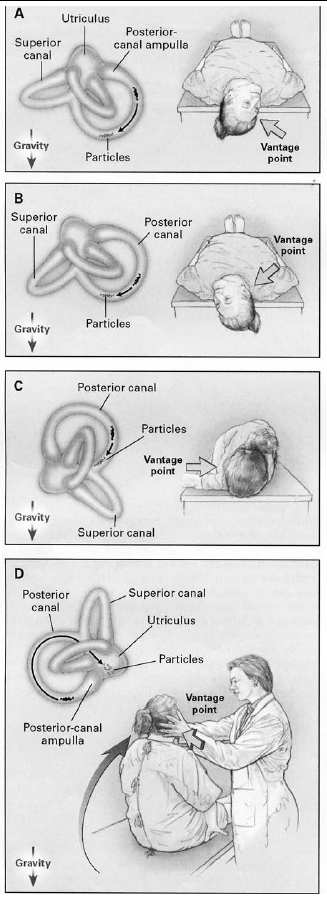
Figure 3.
Epley Canalith Repositioning
Procedure

Figure 3. Performing the Epley Canalith Repositioning Maneuver. A. In similar fashion to performing the Dix-Hallpike maneuver, the patient assumes a sitting position far enough back on the stretcher so that when he lies back his head will extend over the end of the stretcher. The head is turned 45 degrees to the side that brought on vertigo and nystagmus when performing the Dix-Hallpike maneuver. B. As with the Dix-Hallpike maneuver, the patient is rapidly brought back to the supine position with his head extended 45 degrees over the edge of the stretcher and turned 45 degrees to the affected labyrinth (in this case the right). The patient remains in this position for about 30 seconds or until vertigo and nystagmus have resolved. Examiner should support the patient's head throughout the procedure. C. The head is then turned 45 degrees past the midline in the opposite direction. D. Again, after about 30 seconds or resolution of vertigo and nystagmus, the patient assumes the lateral decubitus position with the head looking down toward the floor. E. After 30 seconds or resolution of symptoms, the patient assumes the sitting position. F. The patient then places his chin to his chest. This procedure may be repeated as necessary.
Reprinted from: Furman C: Benign paroxysmal positional vertigo. New Engl J Med 1999:341:1590.